Settled in Luxor for the continuation of our Egyptian adventures, I was itching to go further, towards Aswan, to push the exploration to two jewels of ancient Egypt: Abu Simbel and the Temple of Philae.
But time was not on our side: only one day to make the round trip to Aswan from Luxor. Thus, we faced some tough decisions. We had to bid farewell to the stunning Nubian villages and, with a heavy heart, Abu Simbel, which was too far for our tight schedule. But we’ll return someday!
We called on our host from Giza (yes, the one with the “travel agency”) to concoct a day in Aswan. He was a bit sceptical, especially because of the police checkpoints on the road (I’ll tell you more about that below). He proposed a “classic” itinerary, meaning: the Temple of Philae, the Aswan Dam (from afar), and the unfinished obelisk, lying in the dust. Honestly, we passed on that.
So, we refined our program, despite the persistent doubts of our organizer. But we believed in it. We took the risk. Would we manage to see what we wanted? Story of a tense day (and under 35 degrees in the middle of December).
Traveling on the Roads of Egypt
In Egypt, some roads connecting major tourist sites – like Luxor, Aswan, and Abu Simbel, are subject to strict regulations for vehicles transporting tourists. These measures aim to ensure safety, but they can seriously complicate the logistics of an improvised road trip.
Thus, the road between Luxor and Aswan is officially open to tourist vehicles only from 9 am to 4 pm. Outside this time frame, police checkpoints can refuse passage, even if you are in a private car with a driver. It means that each trip must be meticulously planned, at the risk of being blocked at a checkpoint in the middle of the desert.
This constraint is even more marked since the state built a direct road, as you can see on the map below. The new route bypasses the Nile, saving several hours of travel, but also imposes strict schedules for tourist vehicles.

As for the road between Aswan and Abu Simbel, it has long been considered sensitive. In the past, travel was done in military convoys. Today, this is no longer mandatory, but you must obtain prior authorization (often through your hotel or a local agency) and leave very early in the morning. This should be taken into consideration when planning a trip to Egypt.
From Luxor to Aswan, at dawn
It’s 6 am in Luxor. While the sun is still slumbering, we are up and about ourselves. My friend and I embark on a 4-hour expedition to Aswan, with the first objective: the Temple of Philae.
A driver and an Egyptologist guide, smiling and perfectly English-speaking, await us at the foot of our hotel. Still a bit groggy from the early wake-up, we climb aboard, eyes half-closed but hearts full of enthusiasm. A new day begins, marked by temples and ancient wonders.
Barely boarded the minibus (12 seats, but apparently also used to transport laundry, boxes, and potentially a cargo of mysteries), we are kindly asked to sit at the very back… and to hide.
Wait, excuse me?
We look at each other, one eyebrow raised, the other still asleep. But well, it’s early, we obey, thinking it’s a different culture. We slip to the back, between two bags, a curtain, and growing doubt. An hour later, doubt becomes certainty: we are approaching a checkpoint.
And then, it’s a festival. Curtains drawn. Absolute silence. And us, hidden like two smugglers of ancient temples, stifling nervous laughter.
I take a discreet peek (sorry, but curiosity is stronger than the instruction). And there, I see: dozens of policemen, well in place. Our guide gets out, gestures, speaks loudly, shows papers, points to the bags, takes out his official guide card. We almost hold our breath.
After a good ten minutes of negotiation, the verdict falls: we pass. We leave, a bit shaken, very amused, and especially aware that in Egypt, the adventure sometimes begins well before arriving at the site.
The rest of the journey goes smoothly. The road, almost perfectly straight, cuts through the desert. After the adrenaline of the checkpoint, the monotonous landscape has something soothing. Silence settles in, as does the music in the ears, punctuated only by the purr of the engine and a few poorly concealed yawns.
We doze off, watch the dry landscape pass by, and let our minds wander. This moment of calm, almost suspended, does us good.
Around 10 am, we finally reach the dock of the Temple of Philae. The Nile sparkles under the already high sun, and the excitement slowly returns: the adventure resumes.
Aswan – The temple of Philae
The Nile stretches out before us, peaceful and sparkling under the late morning sun. Numerous boats are waiting, ready to take us to the island of Philae. The tourist buses haven’t arrived yet. Good, we can enjoy the island of Philae without any pressure.
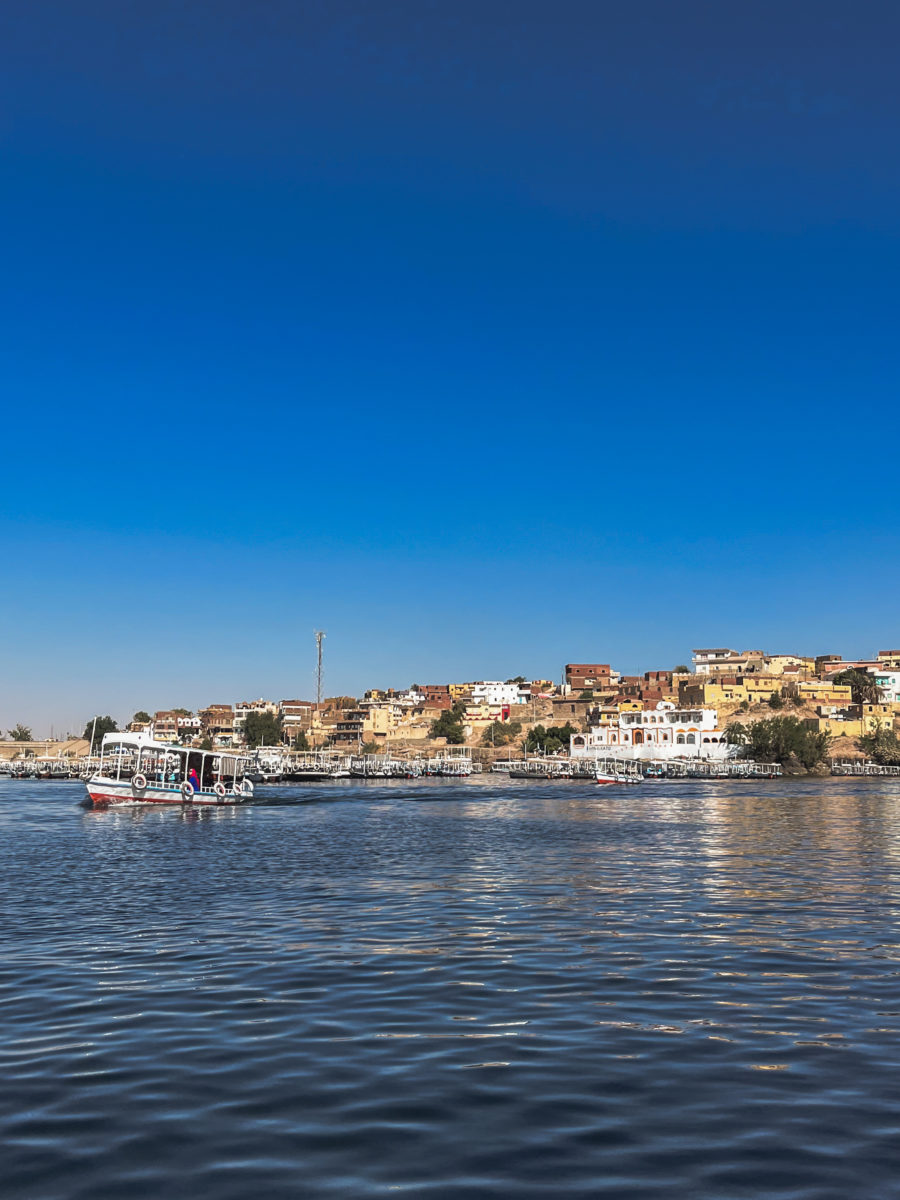
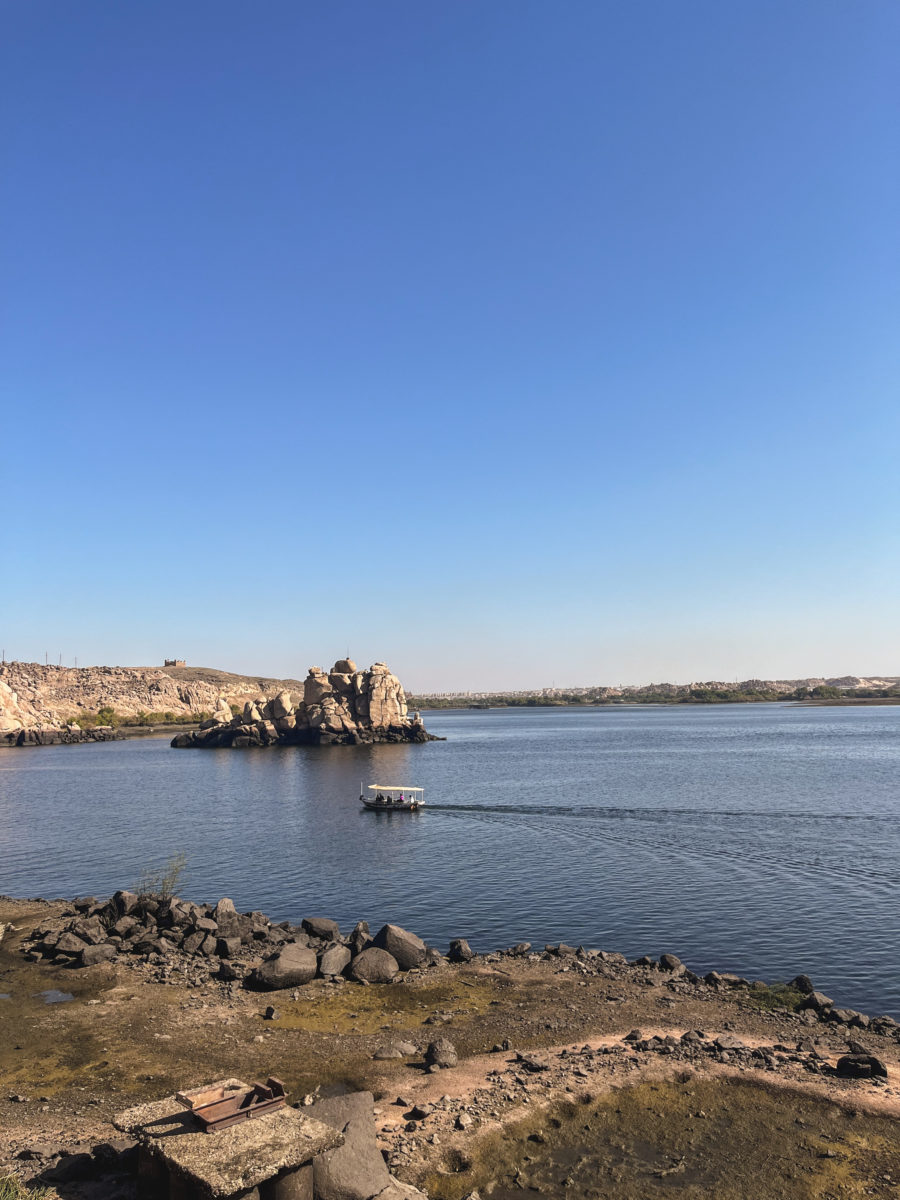
The crossing is short, but it has a solemn feel. The temple gradually reveals itself, majestic, sitting on the water like a stone mirage. We disembark almost in silence, captivated by the beauty of the place. I even manage not to trip or fall into the waters of the Nile.
The Temple of Philae, dedicated to the goddess Isis, is a masterpiece of elegance and serenity. Finely carved columns, still vibrant hieroglyphs, sanctuaries bathed in light… Our guide tells us the history of the temple, moved stone by stone in the 1970s to save it from rising waters.
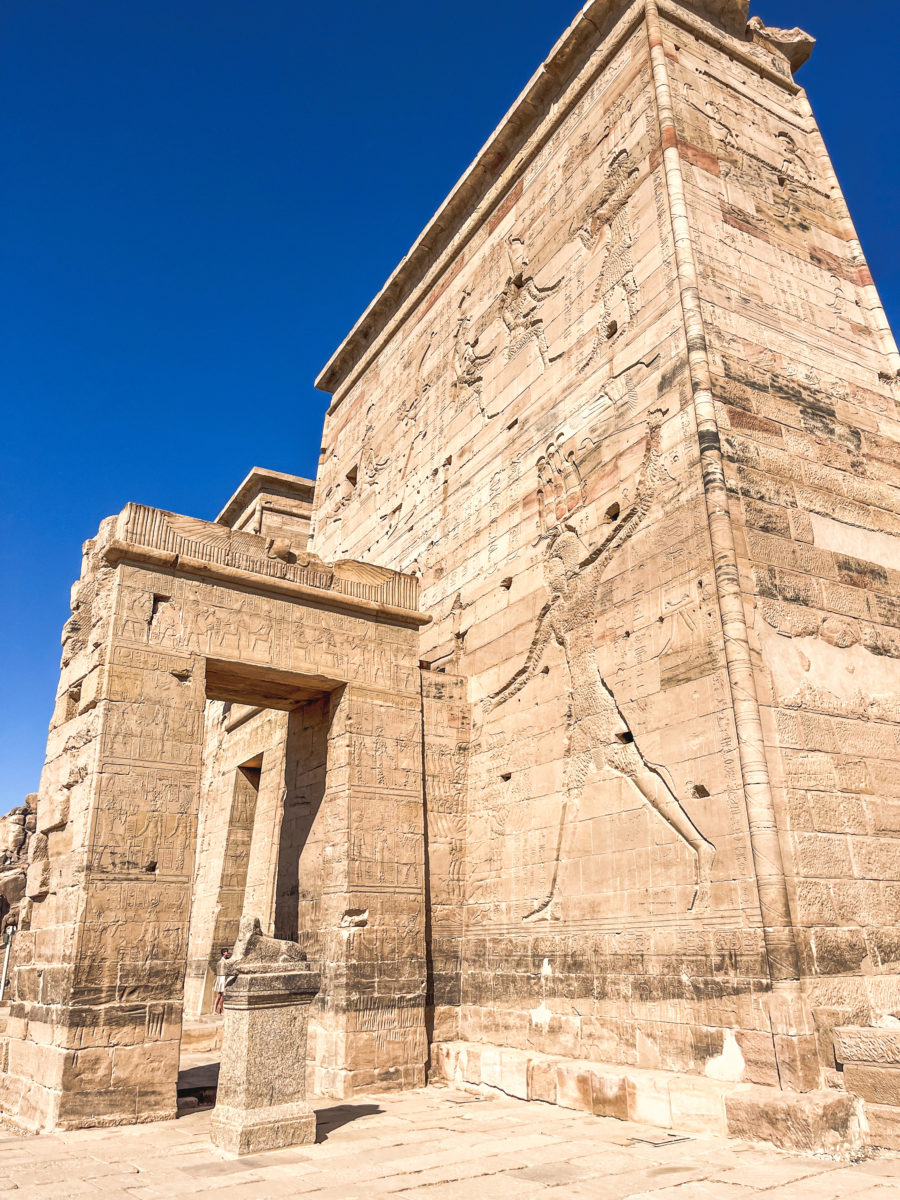
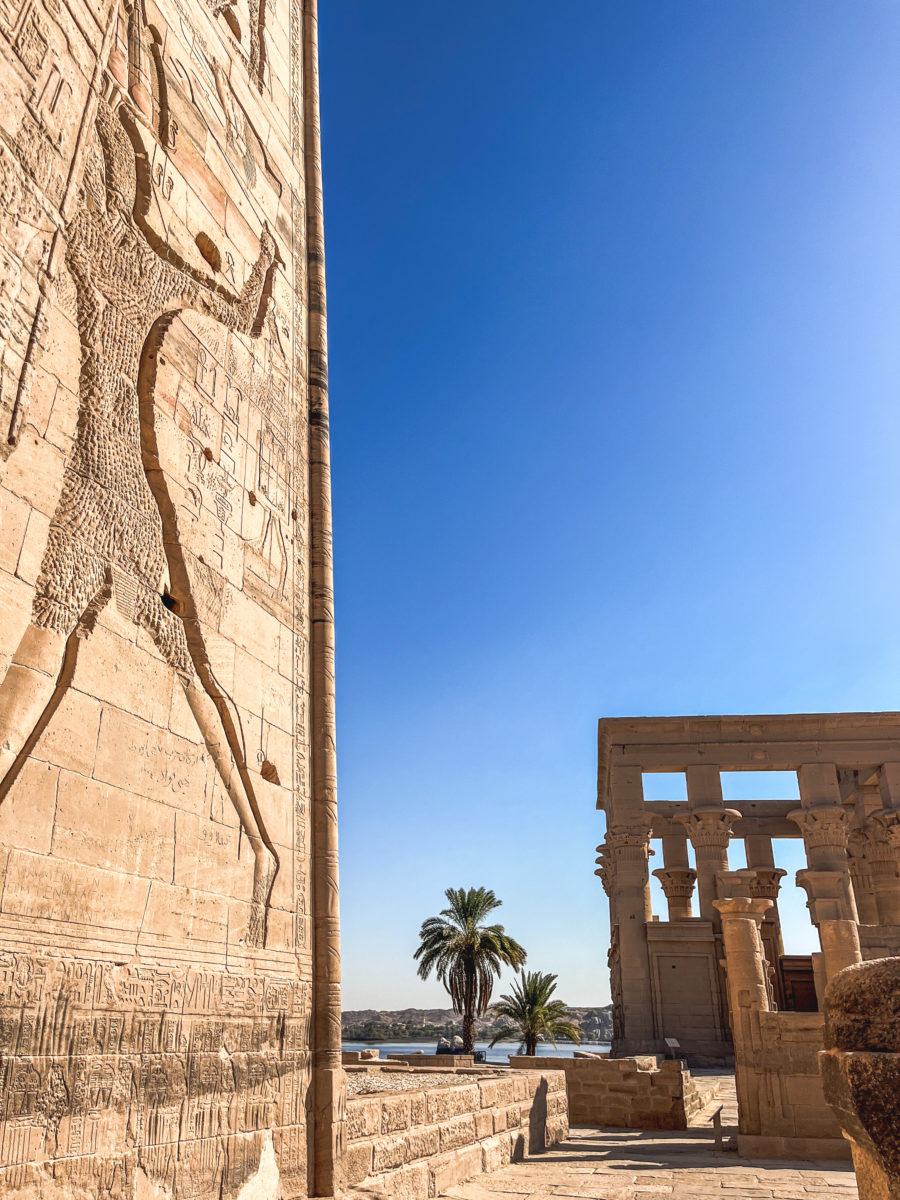
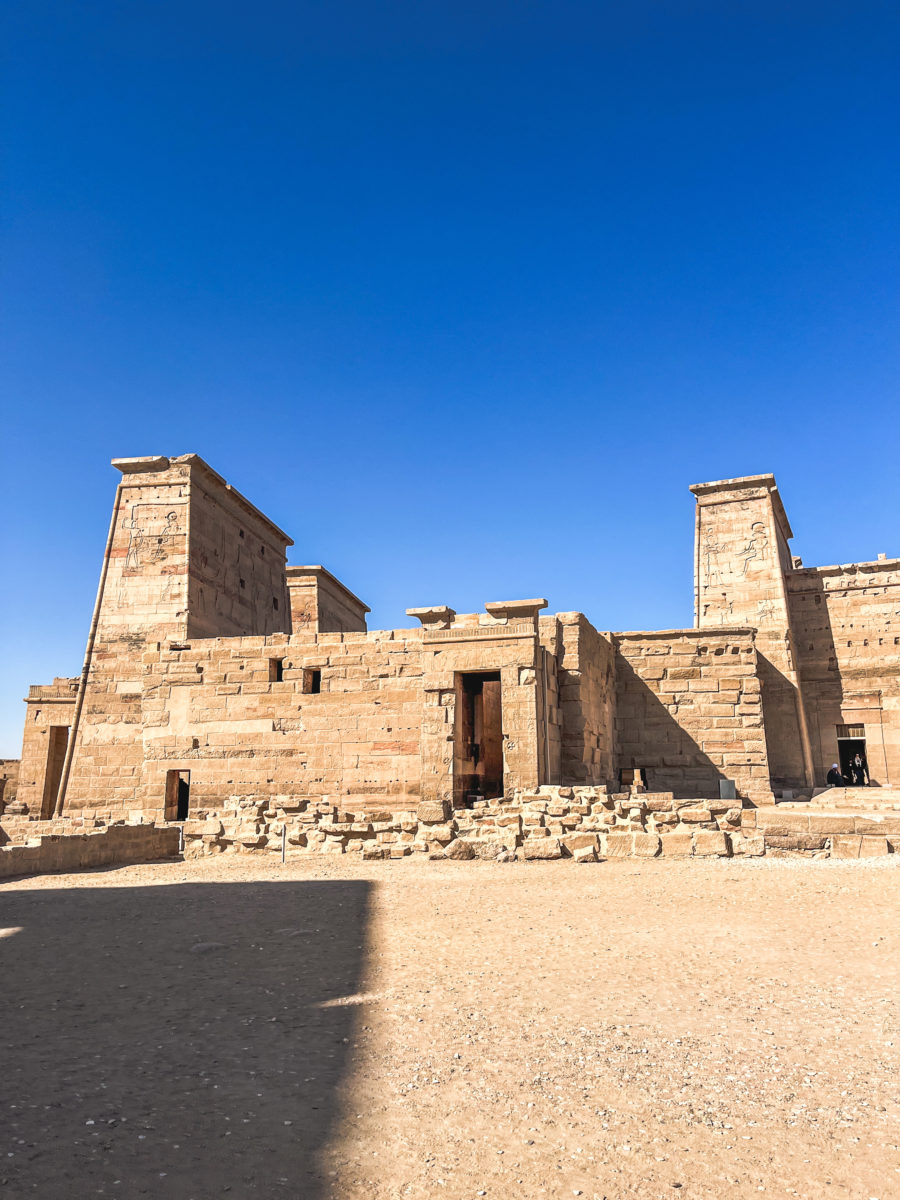
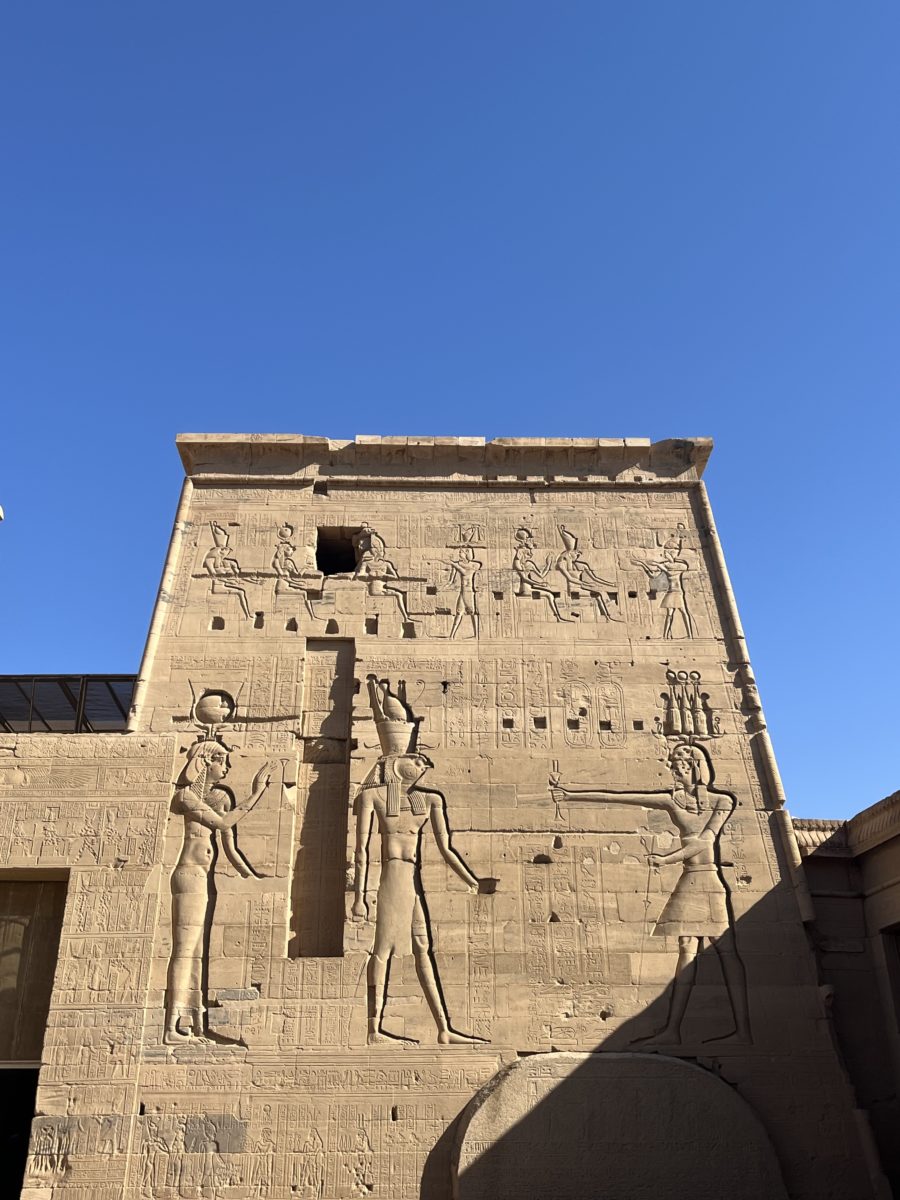
These elements of contemporary history also fascinate me. Indeed, what we see today is not quite the original site. The Temple of Philae was saved in extremis from the waters in the 1970s due to the construction of the Aswan High Dam.
This gigantic project, a symbol of modernity and power for Nasser’s Egypt, allowed the control of the Nile’s floods, the irrigation of agricultural lands, and the production of electricity. But it also submerged villages, Nubian lands… and threatened several archaeological treasures.
Philae was one of those endangered jewels. Thanks to an international campaign led by UNESCO, the temple was dismantled stone by stone and then rebuilt on the neighboring island of Agilkia, safe from the waters. A feat of modern archaeology to preserve a millennia-old treasure.
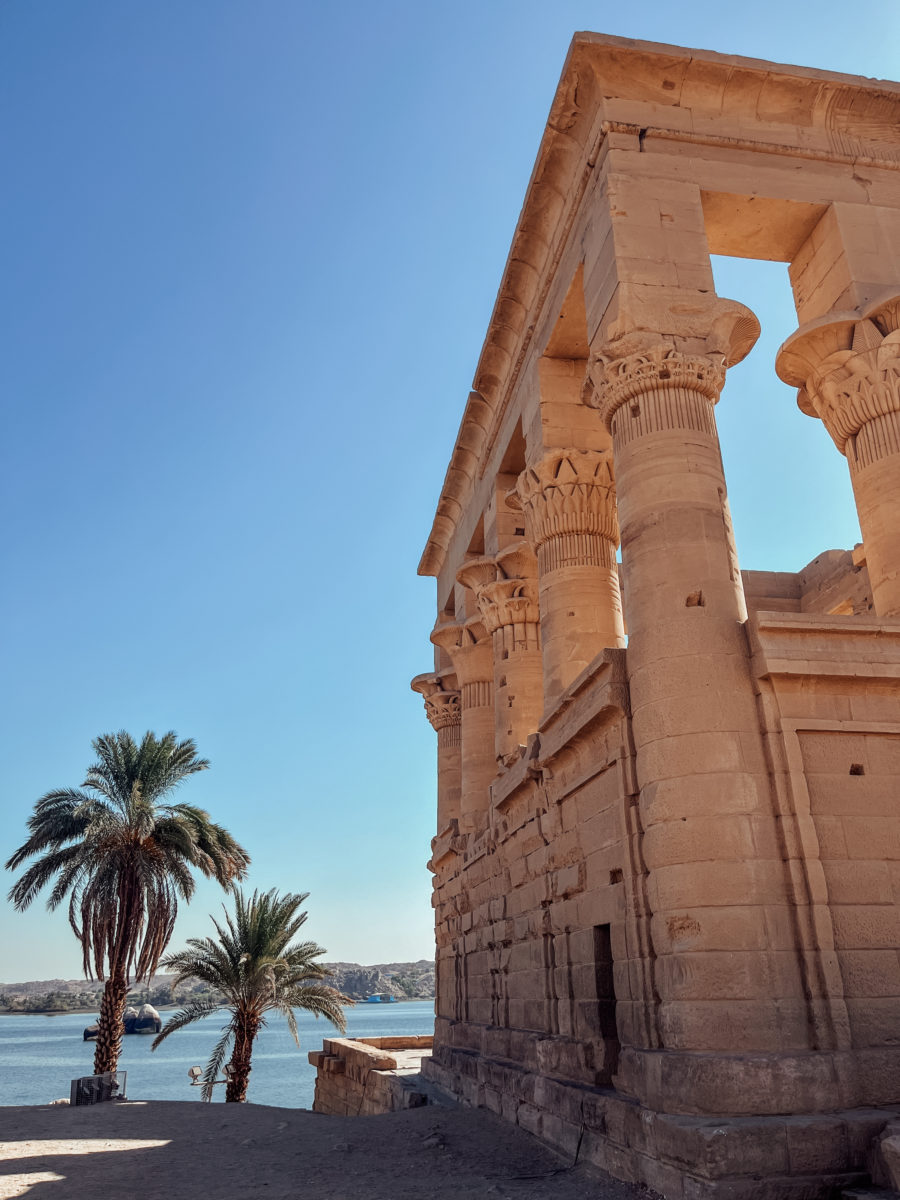
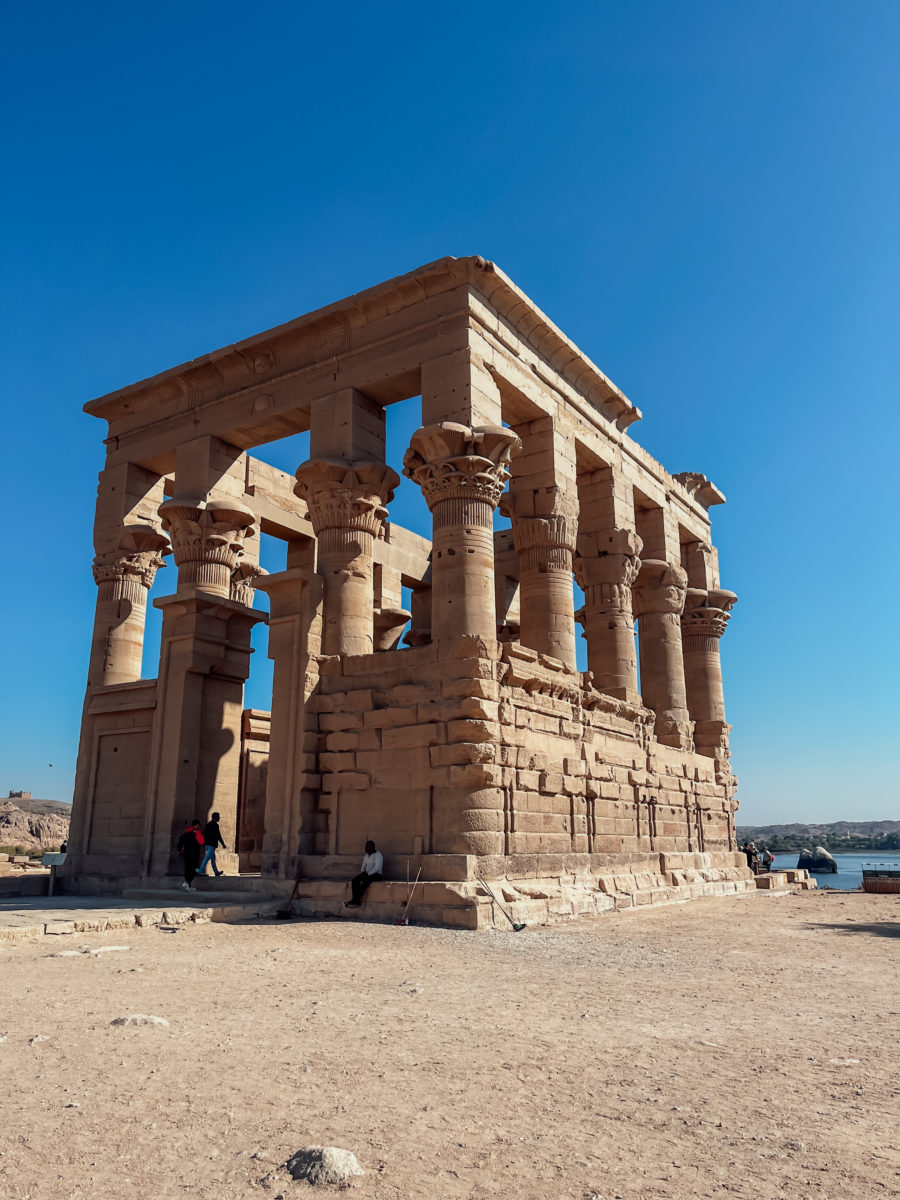
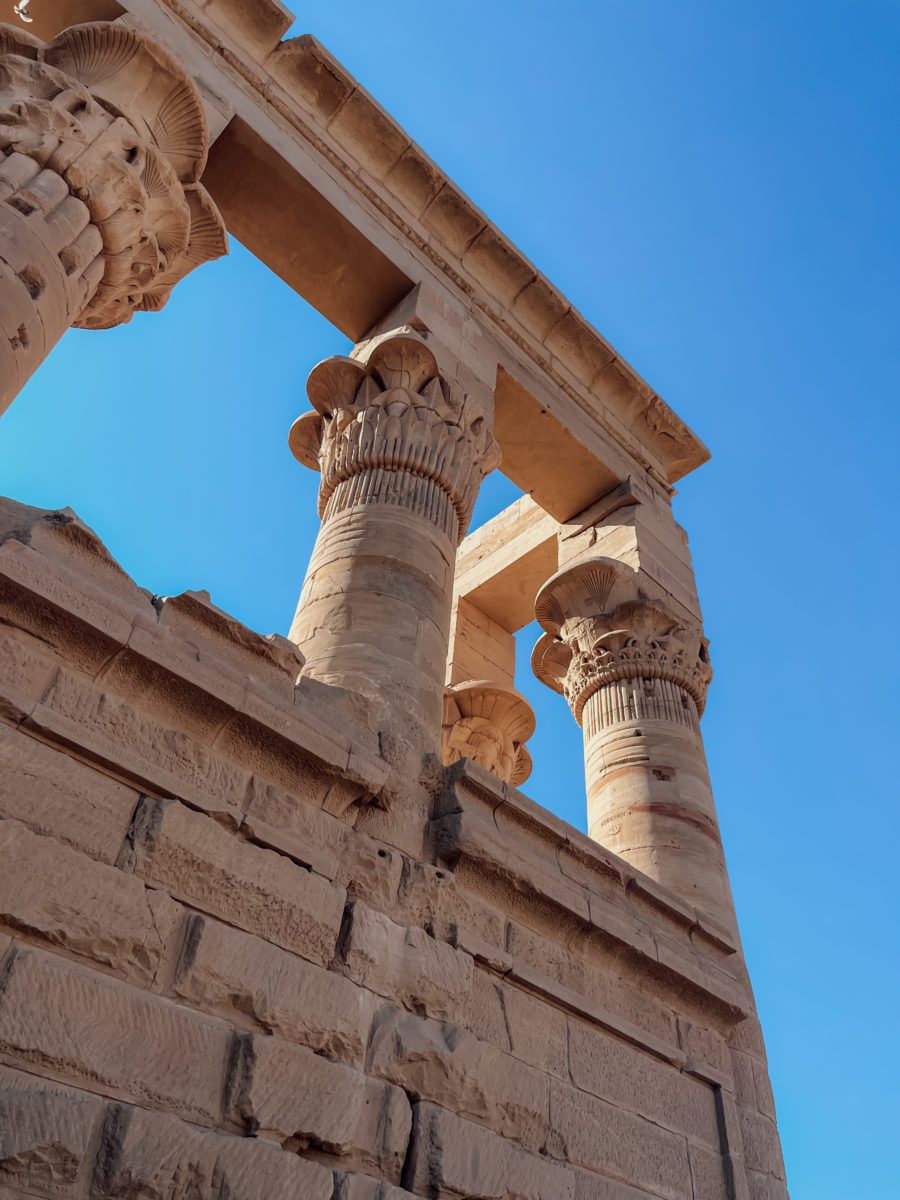
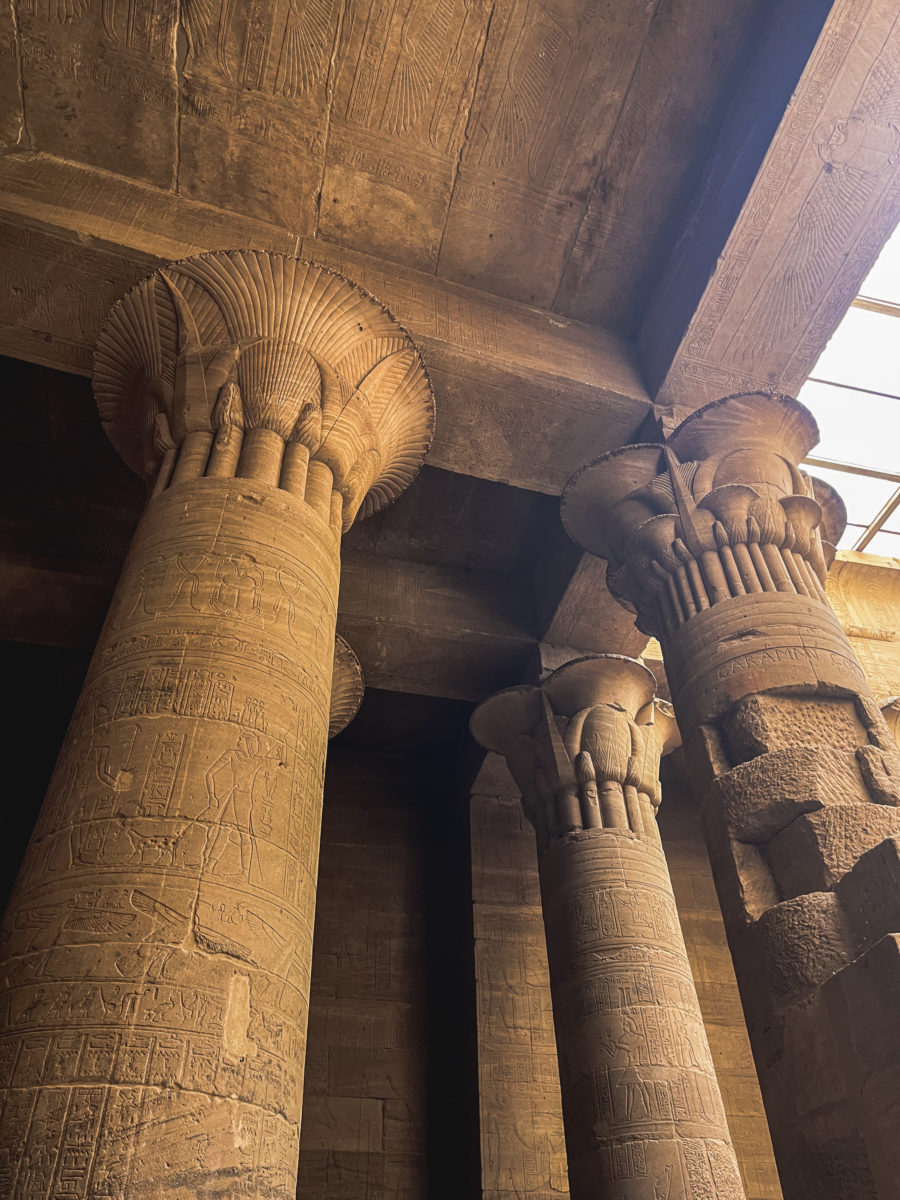
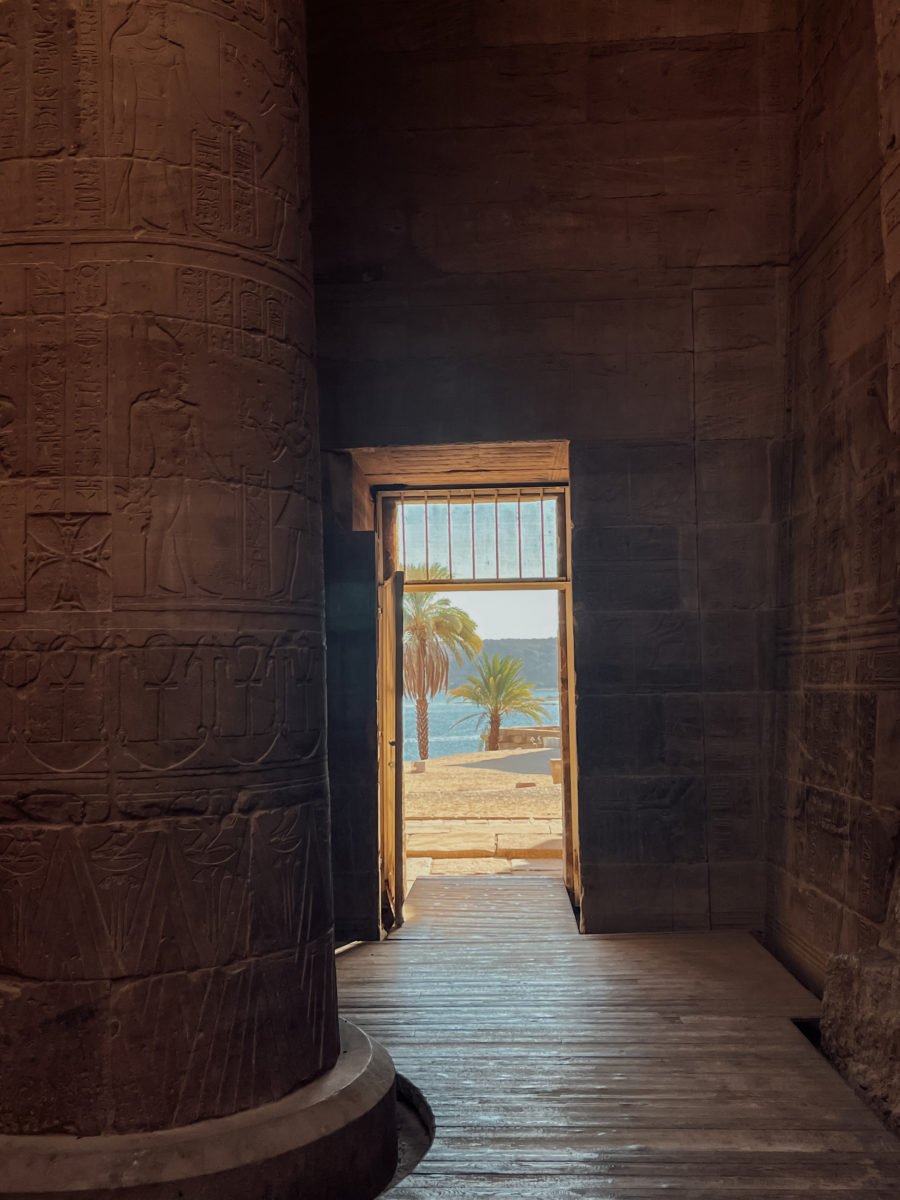
We linger. We absorb everything. Sure, we take photos, but mostly, we just observe. For a long time. Hypnotized. This feeling permeates me throughout the journey. We forget the early morning’s adventurous escapades.
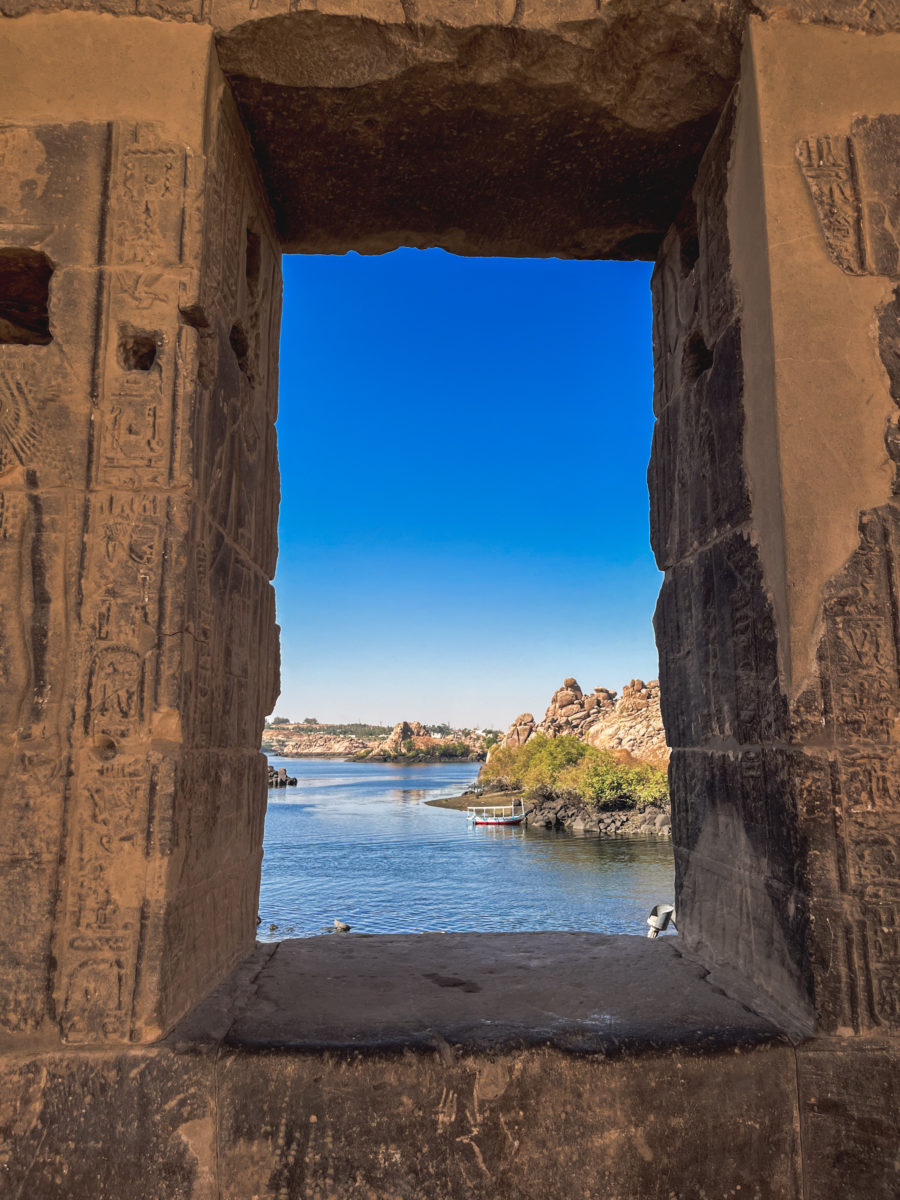
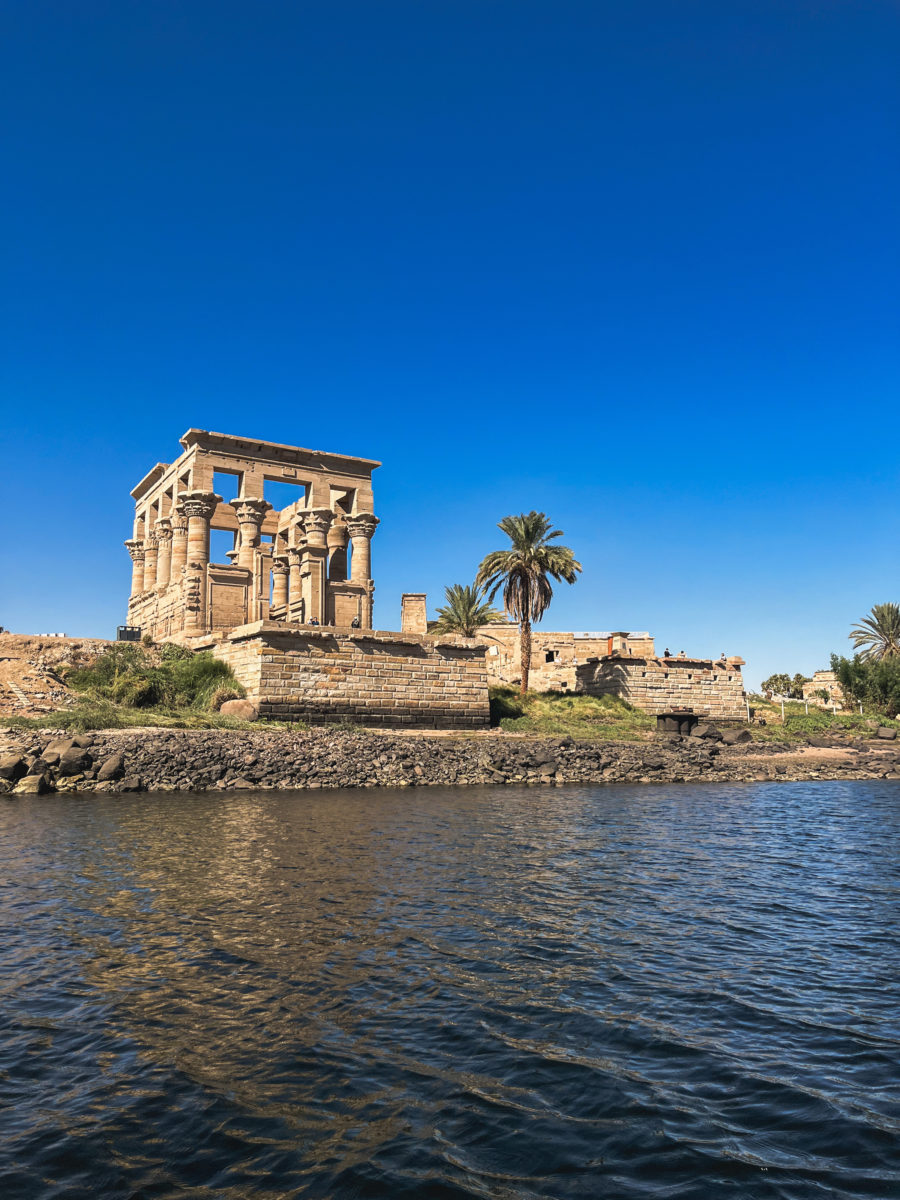
Next Stop – Kom Ombo, the Temple of Two Gods
After the magic of Philae, we head north towards the Temple of Kom Ombo. The sun is blazing, the minibus’s air conditioning does what it can, and our stomachs start to protest. It’s already quite late for lunch, but our schedule leaves little room for culinary improvisation.
This is the paradox of this day: we take our time at the sites because how can we do otherwise in the face of such beauty? However, on the road, it’s a different story. Every minute counts, and stops are timed. The result: no real meal, just a few quick breaks at small roadside stalls. Bananas, Egyptian bread, oranges, biscuits, lukewarm water… a makeshift feast, but enough to keep us going.
When we finally arrive at Kom Ombo, curiosity takes over. Despite the fatigue and hunger, the Temple of Kom Ombo captivates us from the moment we arrive. Situated on the banks of the Nile, it seems to float between sky and water, as if suspended in time. This unique temple, dedicated to two deities – Sobek, the crocodile god, and Horus, the falcon god, is a masterpiece of balance and symmetry. Two entrances, two sanctuaries, two worlds coexisting within the same enclosure.
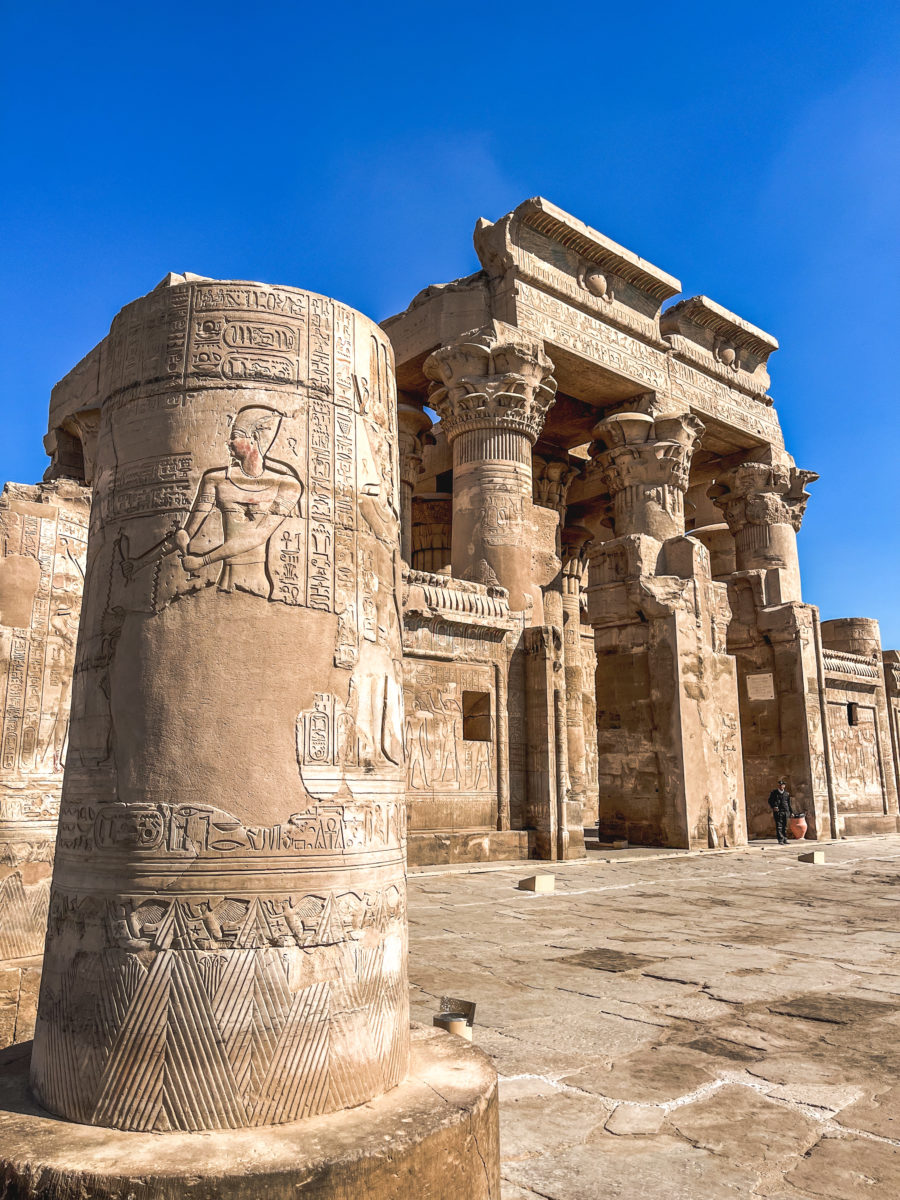
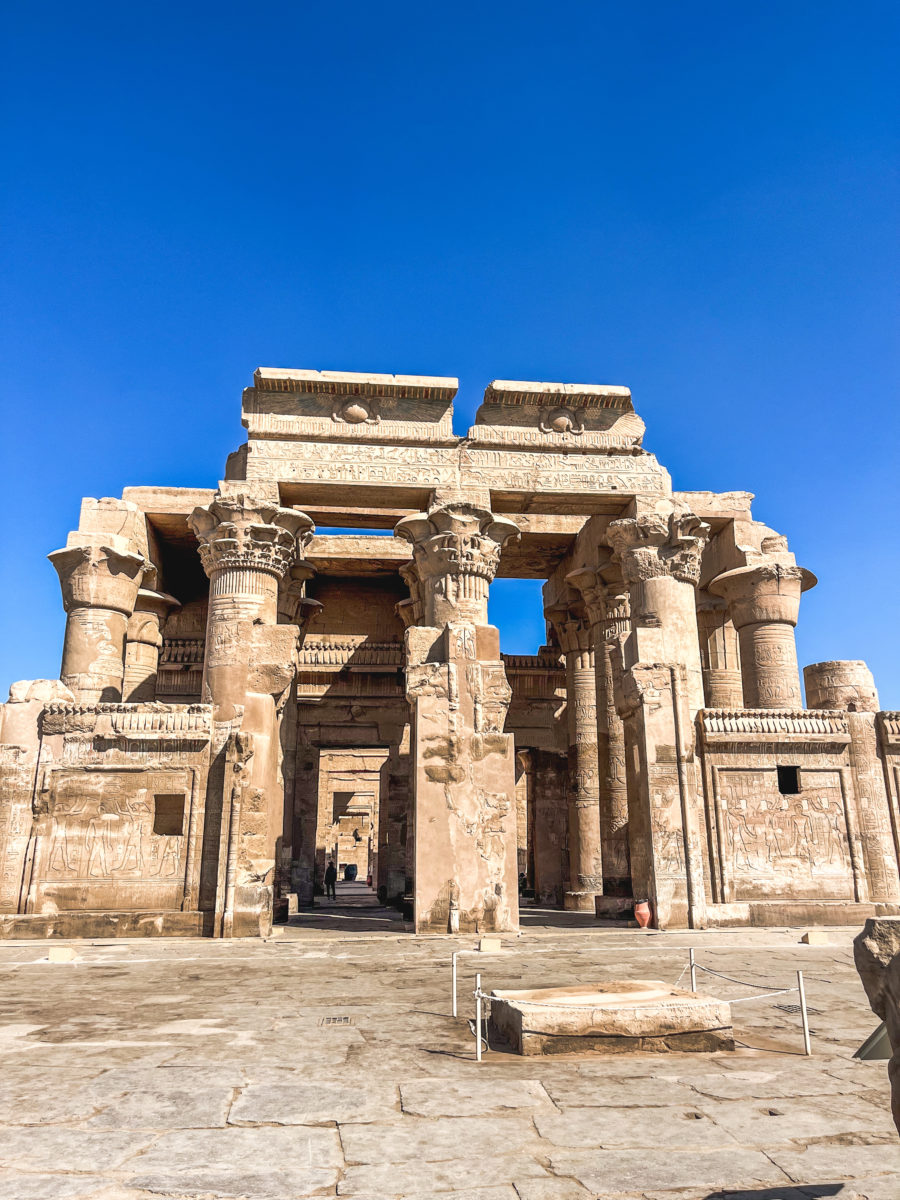
The reliefs are incredibly fine: scenes of ancient medicine, surgical instruments carved in stone, offerings to the gods, stylized crocodiles. And all around, the Nile, majestic, flowing slowly, as if it has always watched over this sacred place.
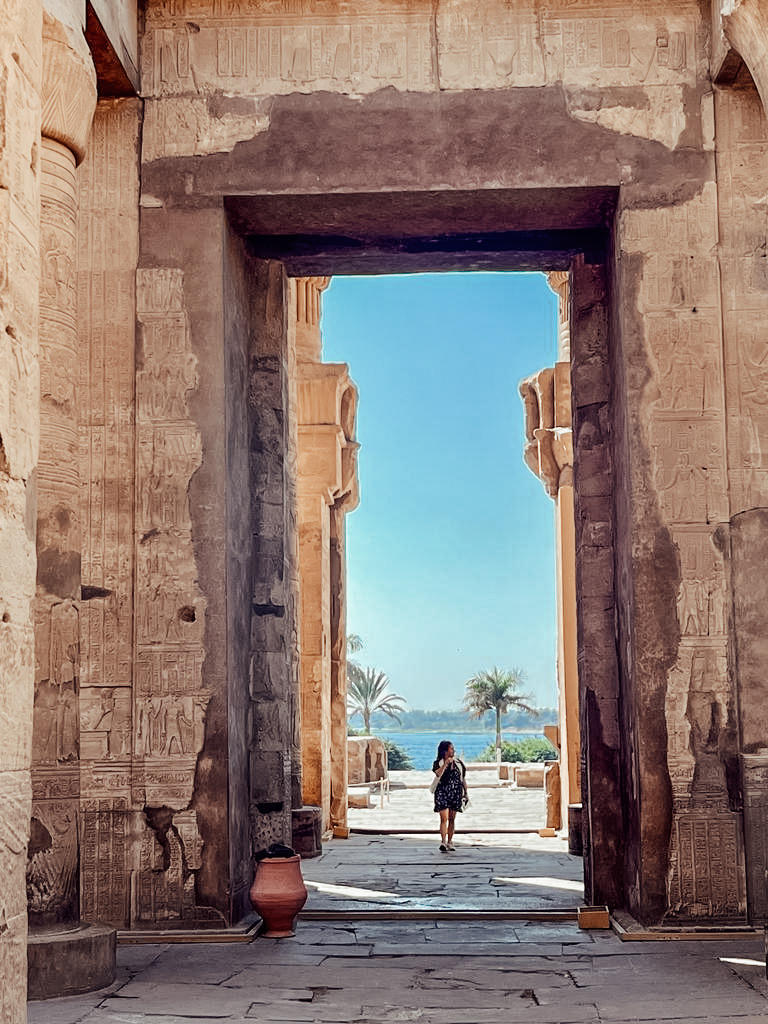
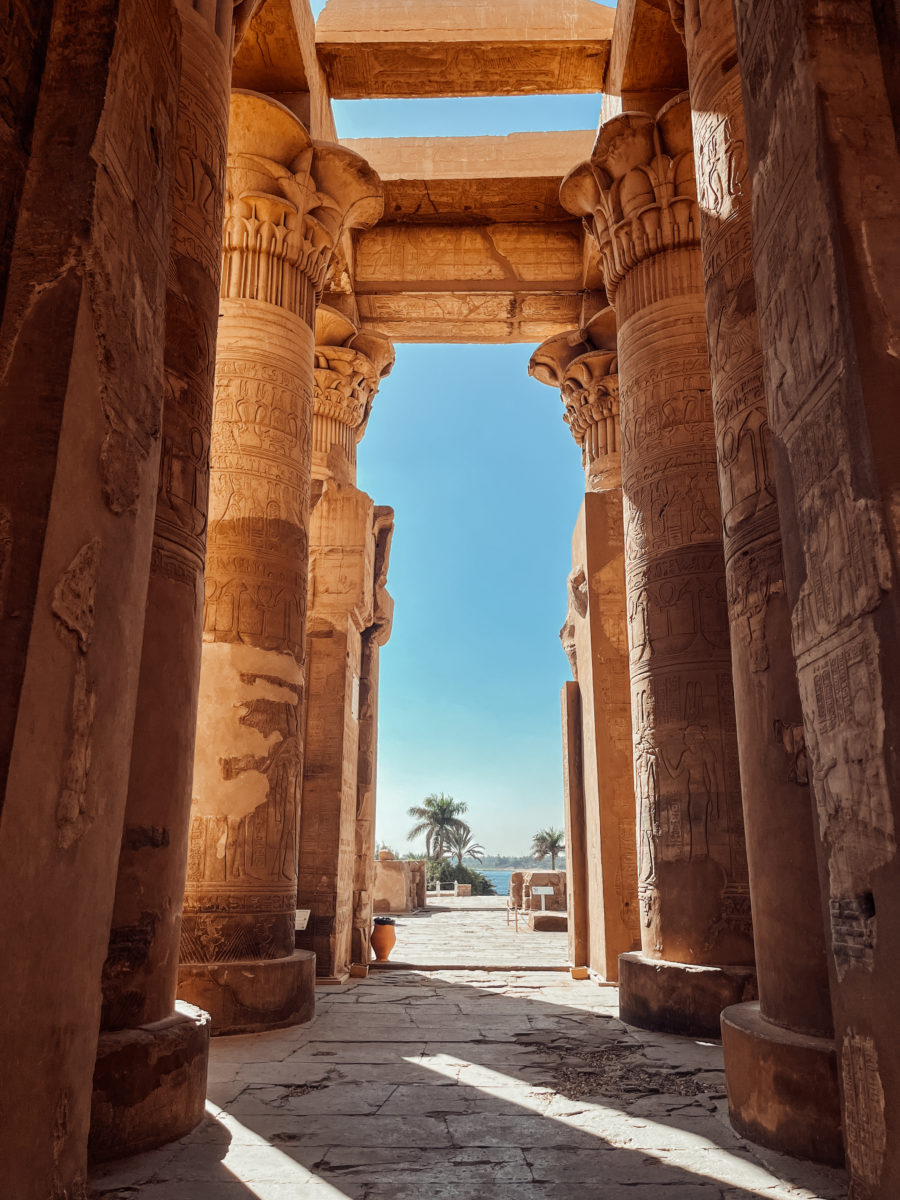
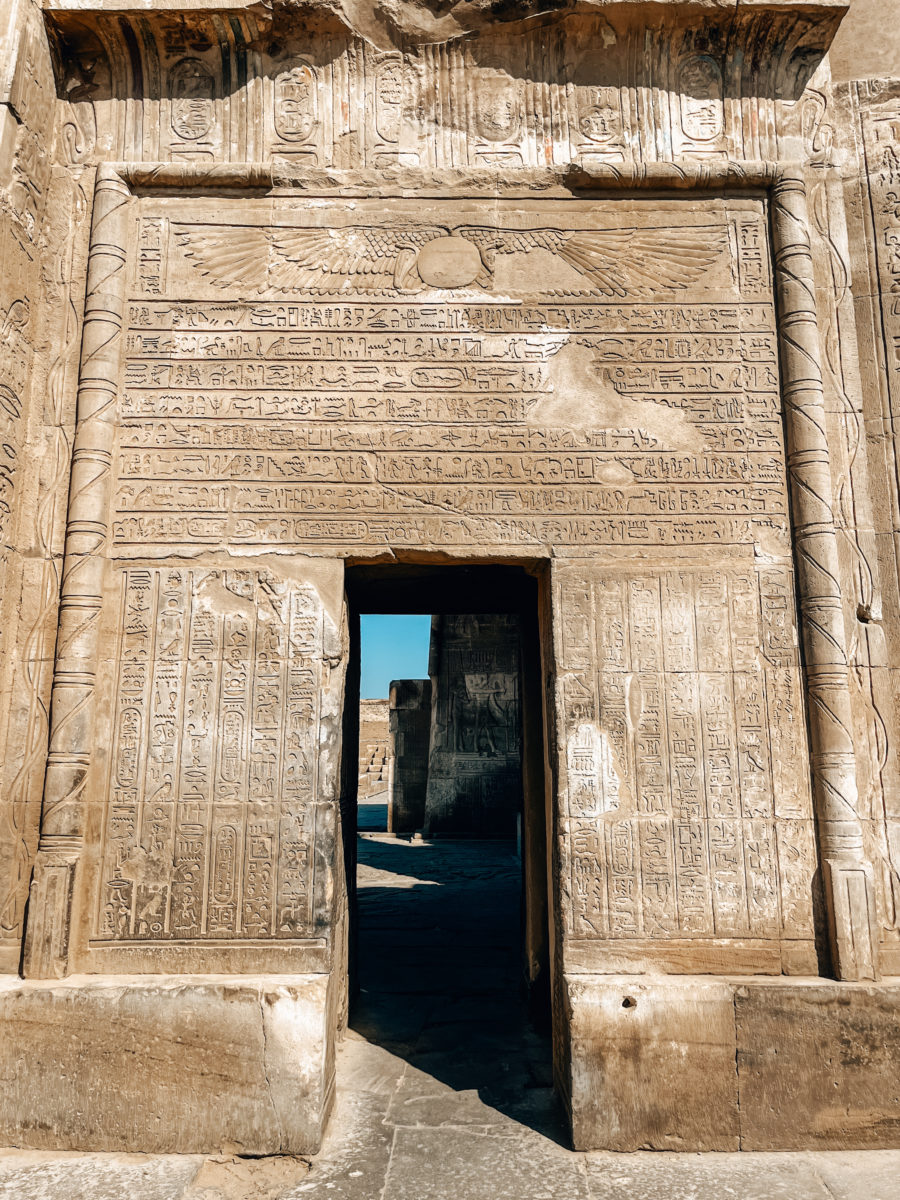
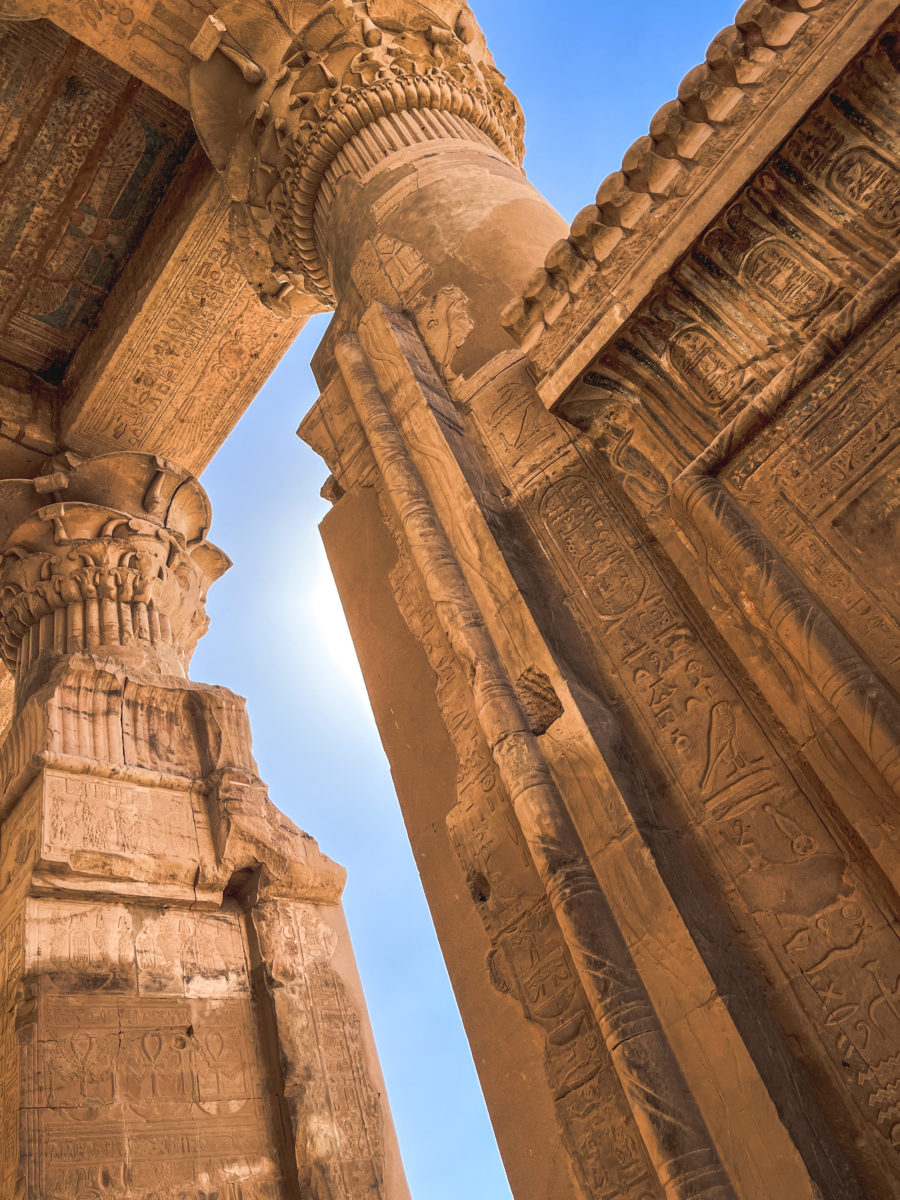
We linger, forget our hunger a bit, and let ourselves be carried away by the golden afternoon light. The wind blows gently, the palm trees rustle, and the boats glide in the distance. It’s a suspended moment, simple and grand at the same time. A stop to include in every Egyptian itinerary.
Return to Luxor: The Nile as a Guiding Thread
The return to Luxor is made by following the Nile, this backbone of eternal Egypt. The road winds between villages, sugar cane fields, date palms, and scenes of daily life. Children play ball, women wash clothes, men haggle behind various stalls, donkeys pull carts loaded with bananas.
It’s another face of Egypt that unfolds before our eyes, more intimate, more alive. We observe in silence, a bit tired, a bit dusty, but deeply touched by this simplicity of life. I spot the train tracks and inquire with our guide. Yes, it is possible to travel to Aswan by train, day or night. He has some worries about overall safety, but my senses are alert. I will return. And why not by train?
Last Stop – Edfu, the Forgotten Temple
Before the light begins to fade, we make one last stop: the Temple of Horus at Edfu. We are not sure if it’s the fatigue, the heat, or the hunger speaking, but we hesitate for a moment, especially since this temple is often overlooked in tourist circuits and history books. However, we were right to stop.
The Temple of Edfu, dedicated to Horus, is one of the best-preserved temples in Egypt. It is also the second-largest sanctuary in Egypt after Karnak. Upon arrival, we are immediately struck by the monumental entrance: two massive pylons, decorated with scenes of celestial battles, greet us like a movie set. The interior is equally impressive: gigantic columns, perfectly readable hieroglyphs, and an almost intact atmosphere, as if the priests had just left.
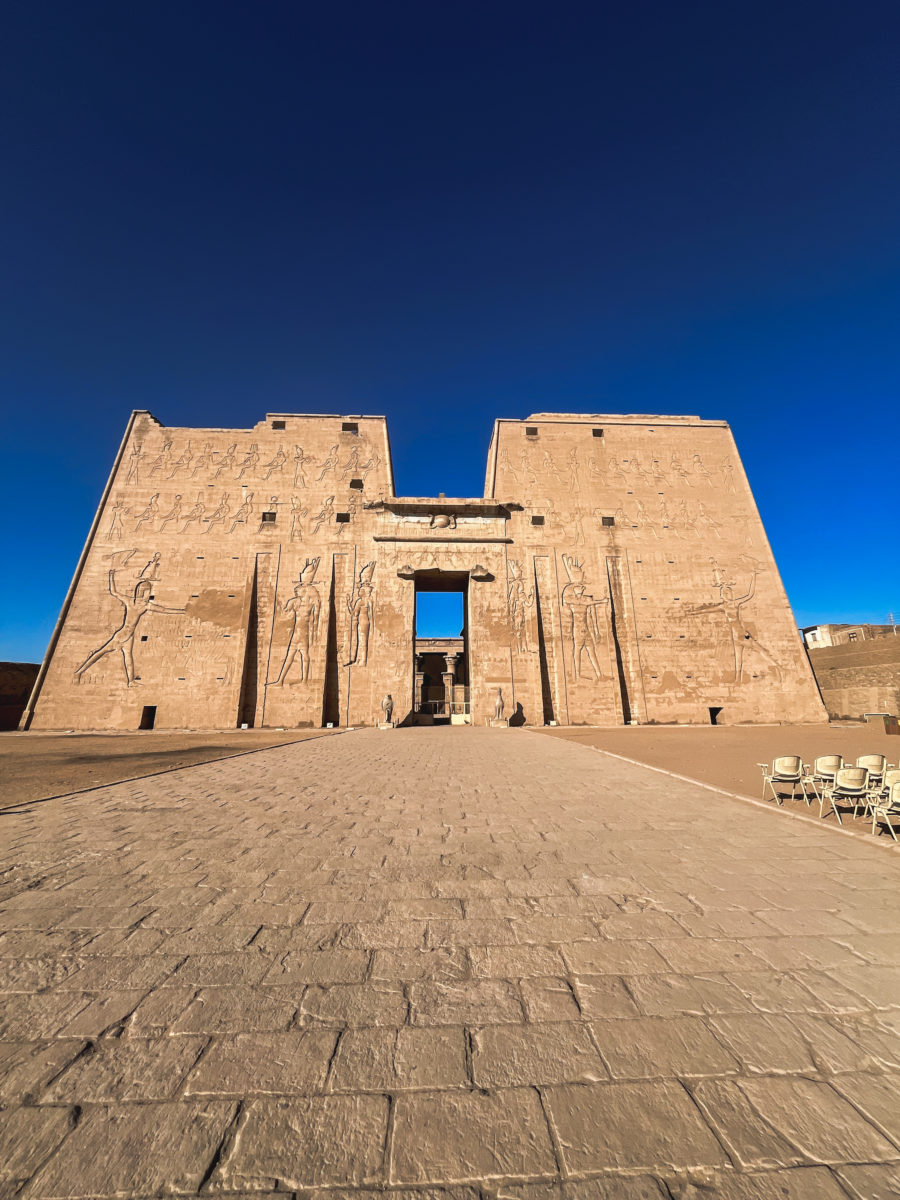
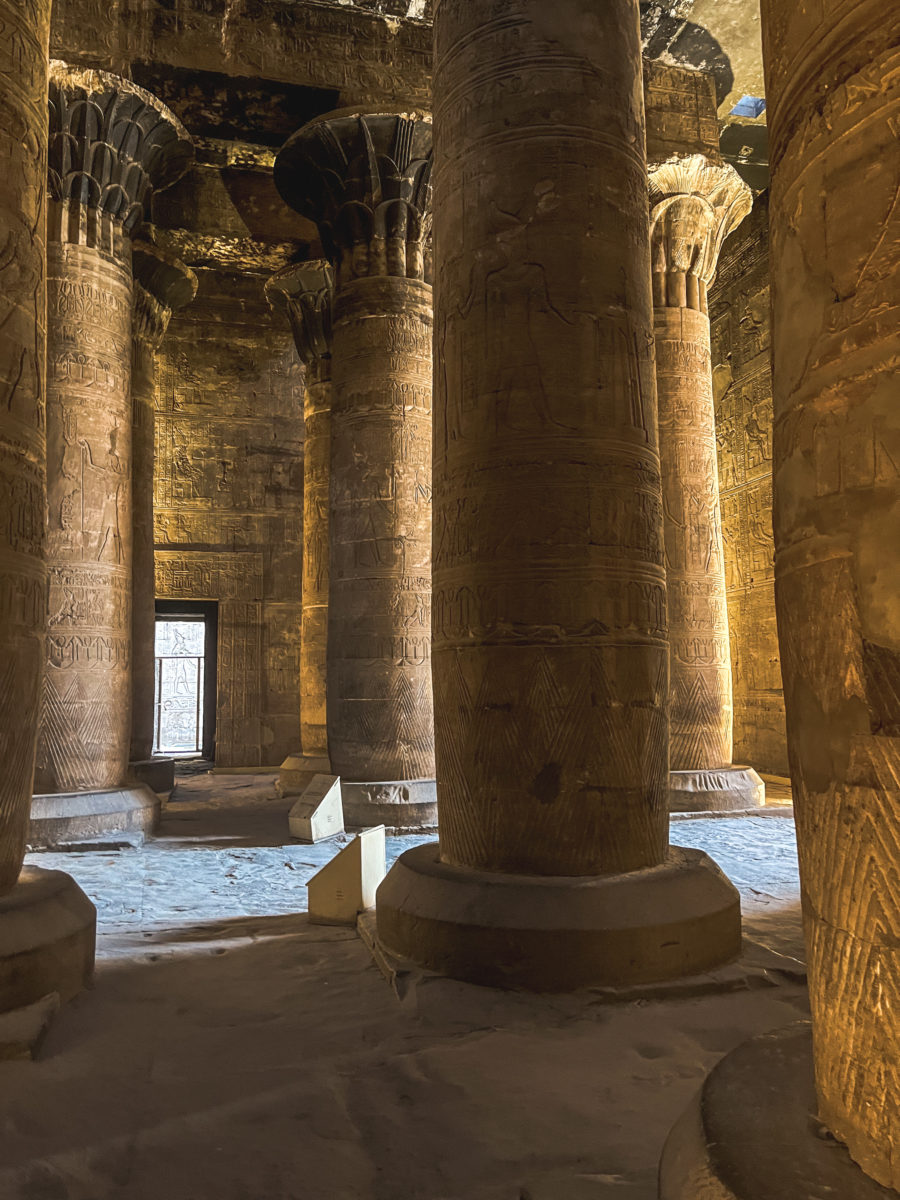
We wander through the cool shadows of the sanctuary, a bit slowed by the day, but still curious. The silence of the place contrasts with the tumult of the road, and we savour this last moment of calm before the return and the checkpoint. It’s 3:00 PM, and our guide informs us that we must leave if we do not want to be stuck. We do not panic; instead, we look for the restrooms and a welcome snack. Then, we set off again.
Last Kilometres to Luxor, Last Checkpoint
The sun slowly sets, tinting the sky with shades of pink and ochre, but with it, our margin of manoeuvre. It’s 3:30 PM. We are somewhere between Edfu and Luxor, the Nile to our left, palm trees dancing in the golden light, and one thought in mind: the checkpoint.
Yes, just like on the way there, the tourist road is officially closed to vehicles transporting tourists after 4:00 PM. And this time, there’s no hiding behind curtains. We had to pass openly, passports in hand, with honest looks, and most importantly… on time. The driver, focused, gently pressed the accelerator. The guide regularly glanced at his watch. Sophie and I, silent, felt the tension rising. We weren’t late, but we weren’t early either.
3:50 PM.
The checkpoint appears in the distance, like a finish line that’s a bit too calm. This time, no nervous laughter, no laundry to camouflage us. Just us, our tired faces, and our passports ready to be drawn.
The minibus slows down. A policeman approaches. Our guide gets out, documents in hand. He talks, explains, shows our passports, our itinerary, his guide card. We hear words in Arabic, rapid exchanges. The policeman glances inside the vehicle. Our eyes meet. He nods.
3:58 PM. The barrier arm lifts: we pass. A collective sigh escapes. We look at each other, half-relieved, half-hilarious. Another mission accomplished, with two minutes to spare.
When we finally returned to Luxor, the sun had disappeared behind the palm trees, and the city was regaining its evening calm. We were exhausted, hungry, dusty… but our hearts were full.
This express day between Luxor and Aswan was a condensed version of Egypt: millennia-old temples, monitored roads, scorching landscapes, improbable encounters, nervous laughter, and the constant feeling of being both out of time and firmly rooted in the present.
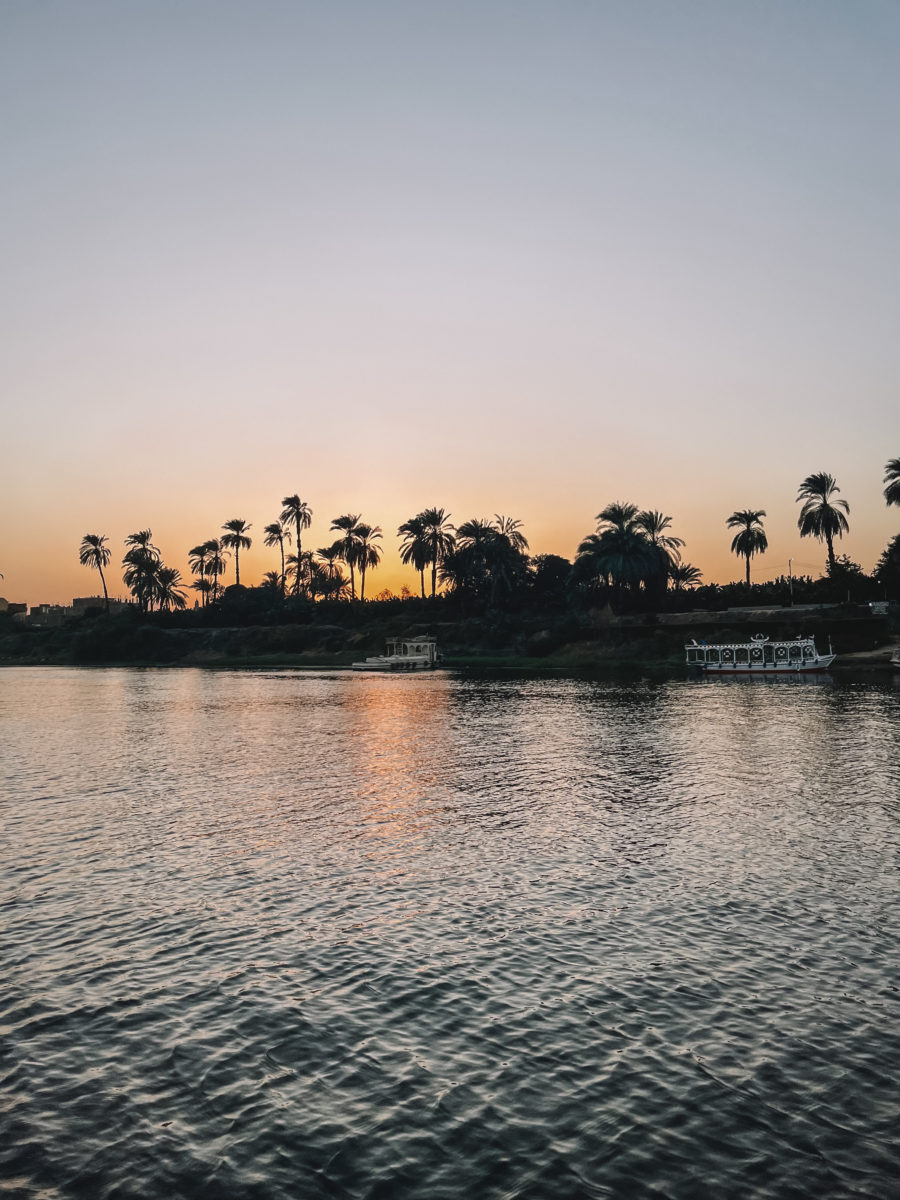
Not everything was seen. Certainly, not everything was understood. We did not even really eat. But we lived. Intensely. And maybe that’s the true luxury of travel.
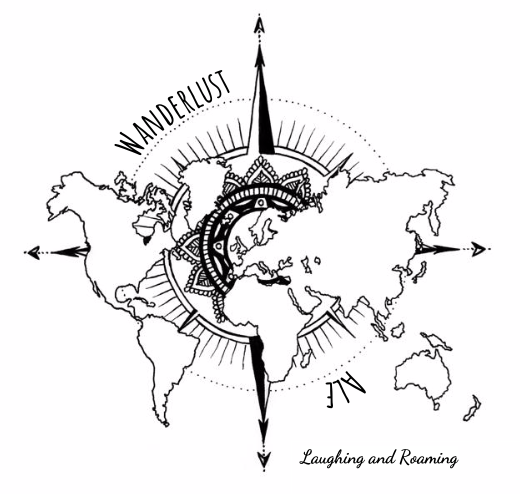
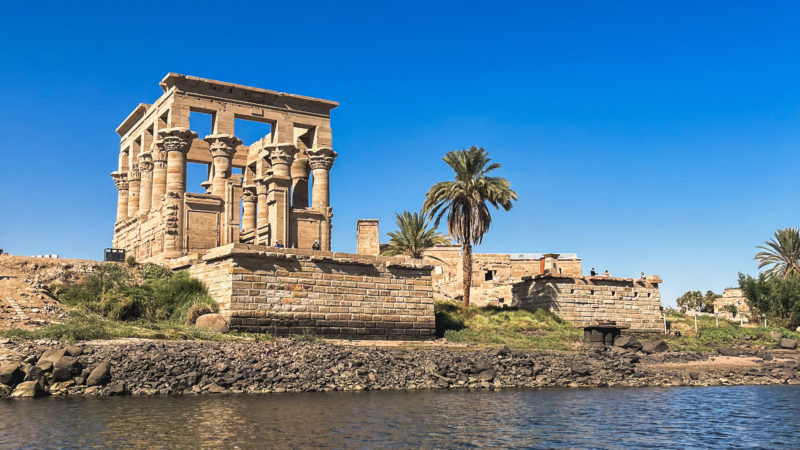

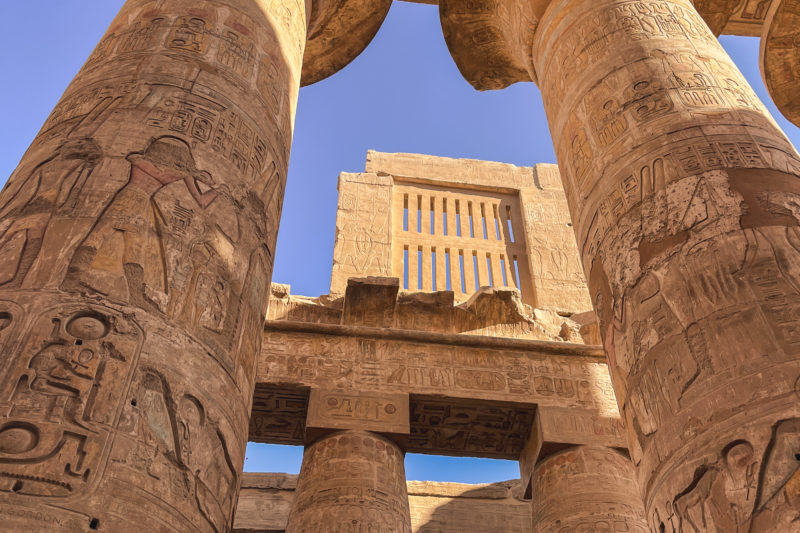
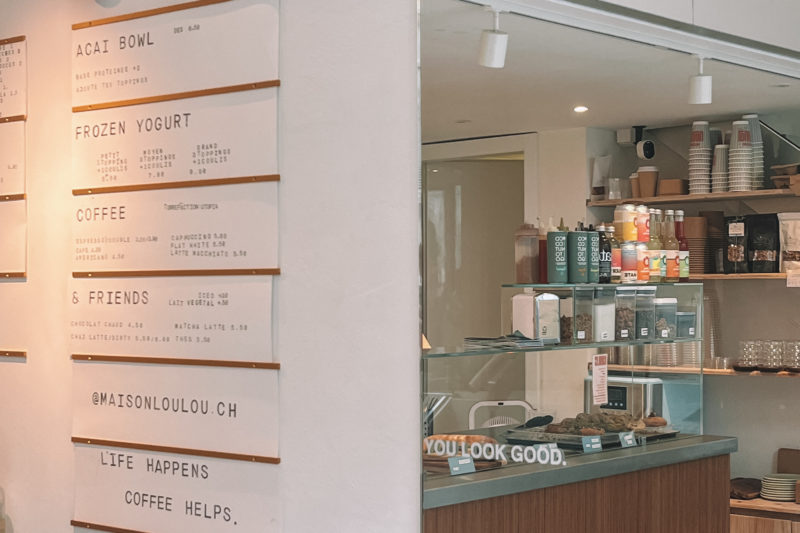
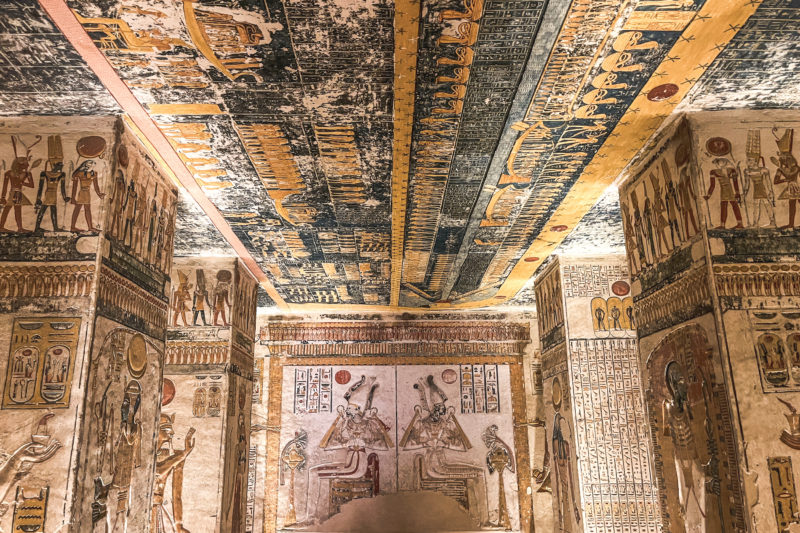
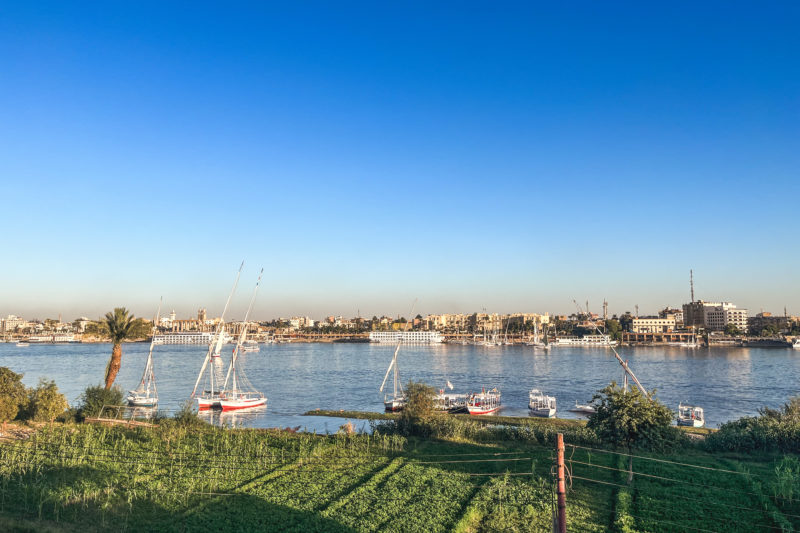
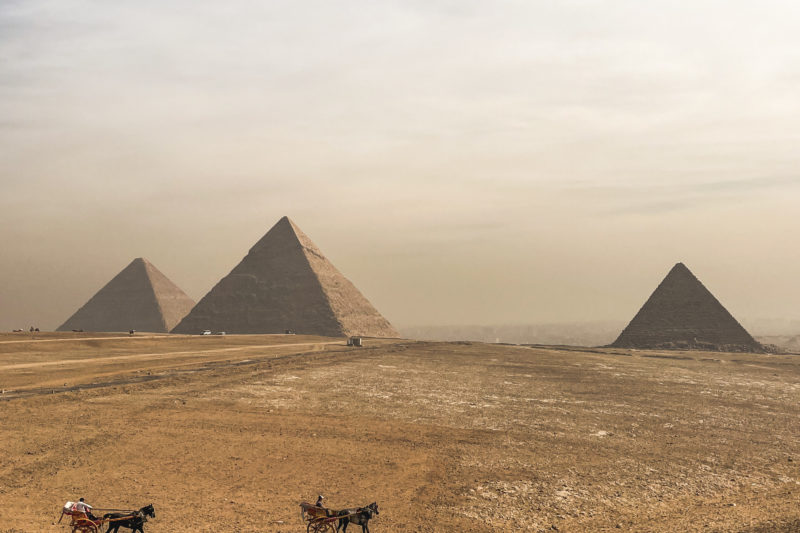
Woow, I am so looking forward to going there. amazing article, thanks
Enjoy your time there. you will love it!